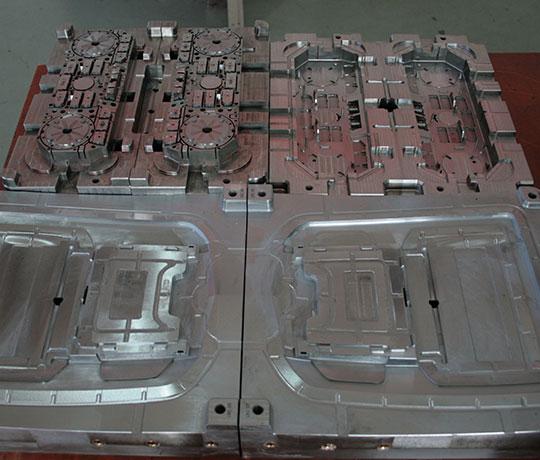Plastic injection molding is a manufacturing process used for mass production of plastic parts, where the same products are produced over and over again, and industrial robots can use them because they can perform these highly repetitive tasks 24/7.
One of the most common applications of robotics in injection molding is through machine maintenance. Because the task is labor-intensive and requires a high degree of consistency in handling due to the molding of heat-sensitive materials, the robot can reduce the repetitive work and risk of injury for the operator.
The use of robotics in machine maintenance can completely improve product consistency and productivity. Robots equipped with pneumatic clamps or vacuum cleaners ensure that newly injected molded parts are handled with care and avoid damage.
Manufacturers can use robots to load pre-printed labels or decorative film directly into an open plastic injection mold. Labels and decorations are then permanently encapsulated in molded parts and become an integral part of the final product.
In recent years, there is no doubt that with the increasing attention to the environment, recycling also plays a pivotal role in the injection molding process of plastics, in which materials such as thermoplastics have been recycled and used for many times.
When the mold is opened at the end of the process, the plastic cools and leaves the solid plastic in the gate, runner, gate and cavity parts.
State-of-the art sprue picker robots are designed to quickly remove the sprue or runner from a plastic injection molding machine. The manipulator will also feed the material into the pelletizer for further recovery.
Application of Robotics in Post-processing
Robotics also plays an important role in the post-processing of plastic injection molding. Many producers choose to use a robotic trimming unit because of its first-class repeatability compared to a human worker performing the same task.
The robot can also pick up and place molded parts for further operations, such as testing, inspection and hot stamping. Speaking of assembly, robots can use lasers to perform complex welding operations, improving assembly accuracy and reducing cycle time.
Automating the post-processing components in plastic injection molding manufacturing can greatly improve productivity and cost effectiveness. These machines free employees from repetitive manual tasks such as labelling, packaging or stacking.
Traditional injection molding and automatic injection molding
In the traditional form of injection molding, the plastic resin is manually passed to an injection molding machine and then gradually melted. When the plastic turns liquid, it is pushed through a nozzle into a mold, where pressure is applied until the cooling time has passed.
Then, when the operator unloads the production parts and places them on the conveyor belt, the frame opens. The process is repeated an infinite number of times, depending on the number of components that need to be manufactured.
When it comes to automatic injection molding, the repetitive process is granted to the robot, allowing the operator to focus on other complex tasks and necessary checks.
Robotics can be implemented in all parts of the manufacturing and post-production processes, making the production and assembly of plastic molds much faster and cheaper.
Flexible and high-speed
Because the 3-axis robot is used in horizontal injection molding machines and high-speed processes, and the 6-axis robot is flexible in both vertical and horizontal injection molding machines, it is certain that more and more robots are being used in injection molding option operations.
Now that you have a good understanding of how robotics is implemented in injection molding operations and the benefits they bring, be sure to at least understand how they can help you take your plastic injection molding production to the next level.



